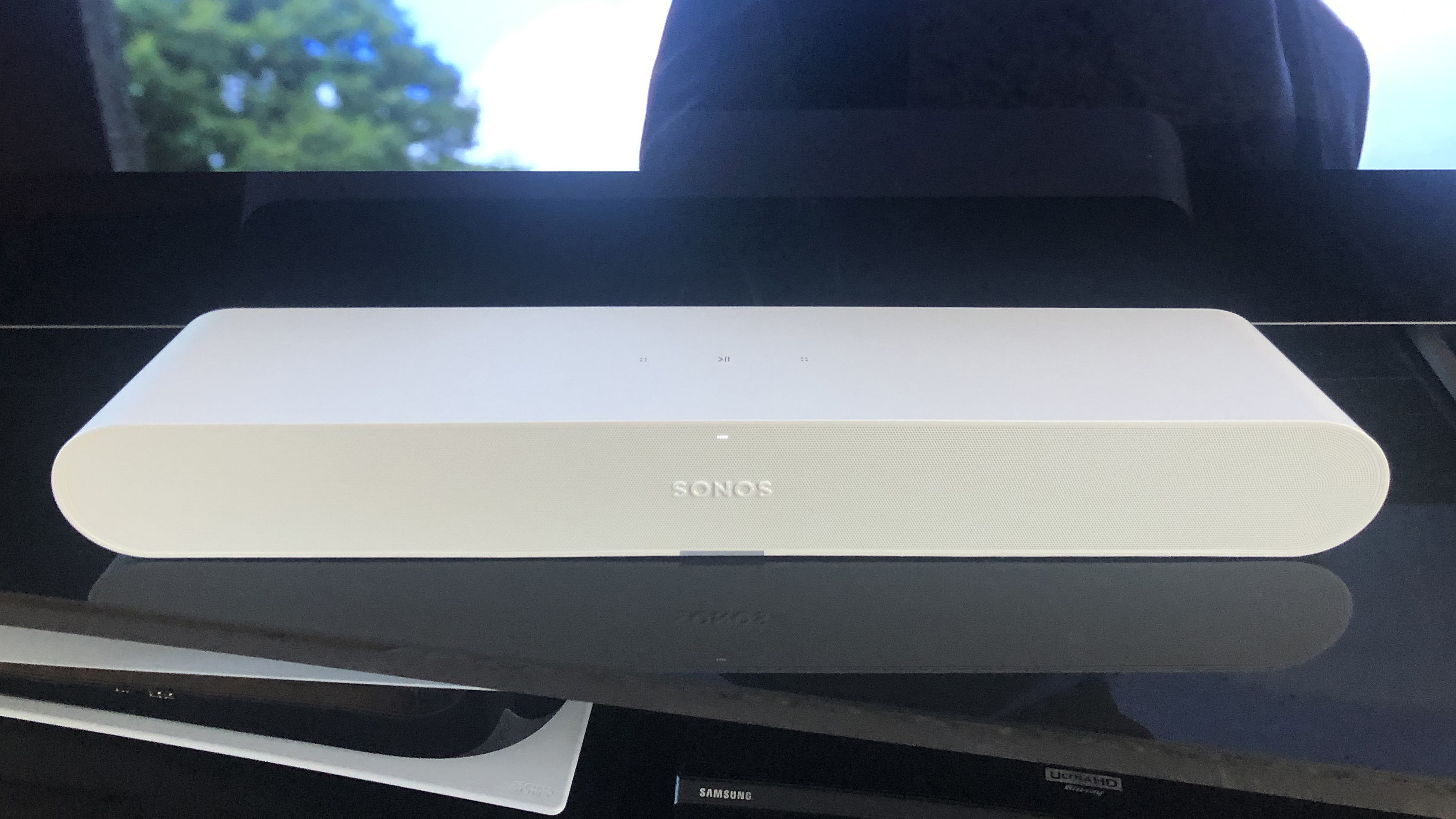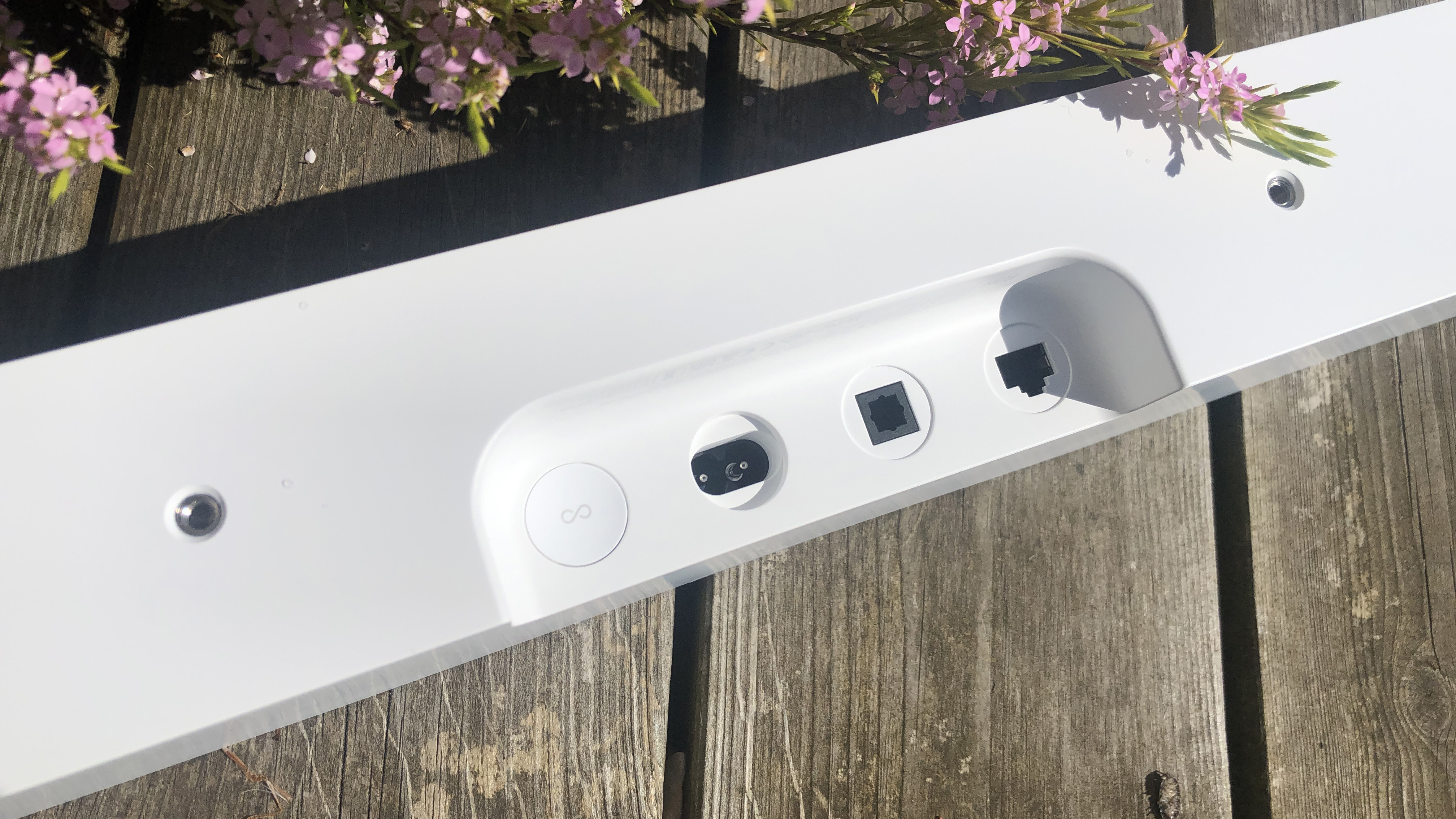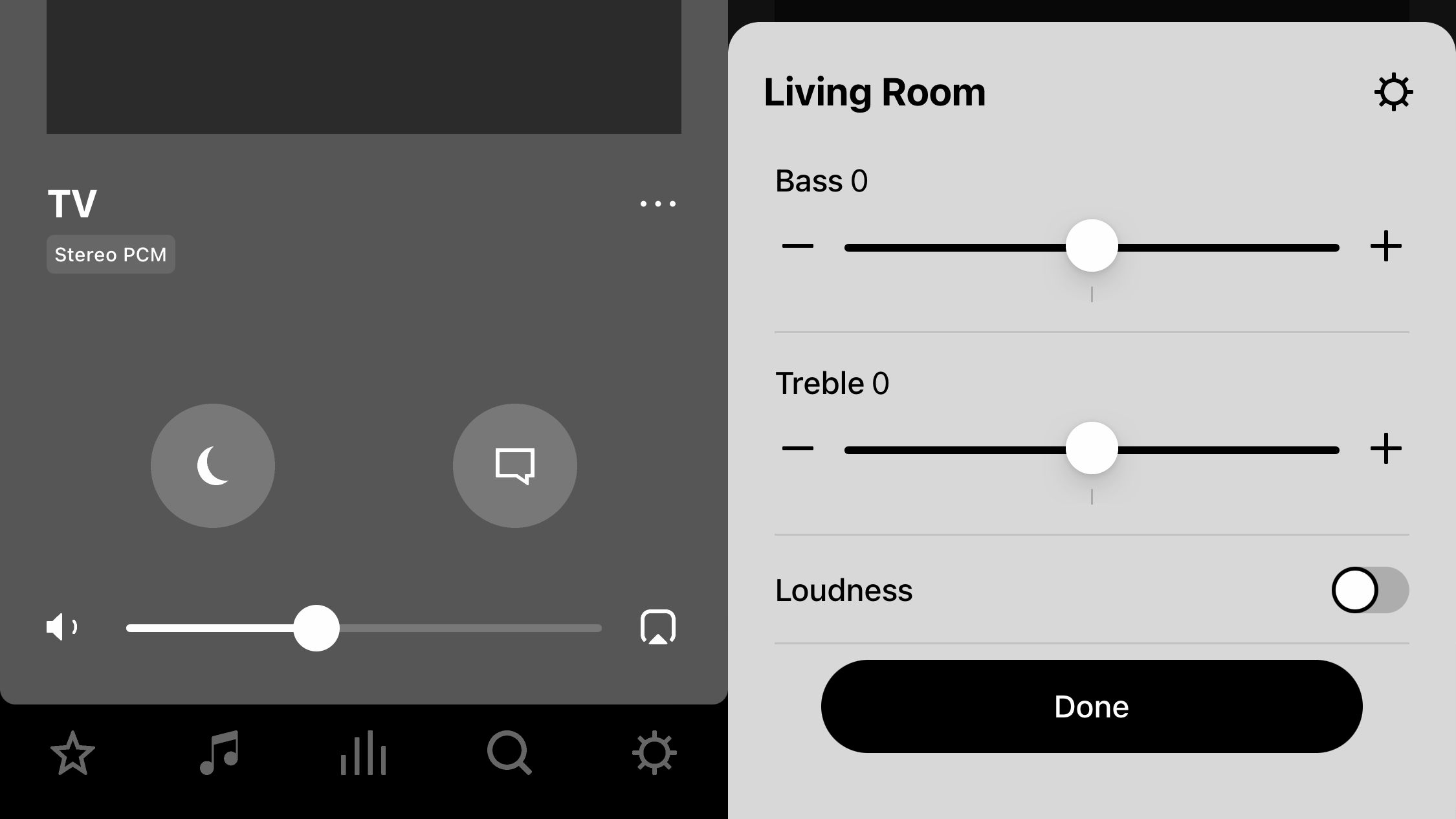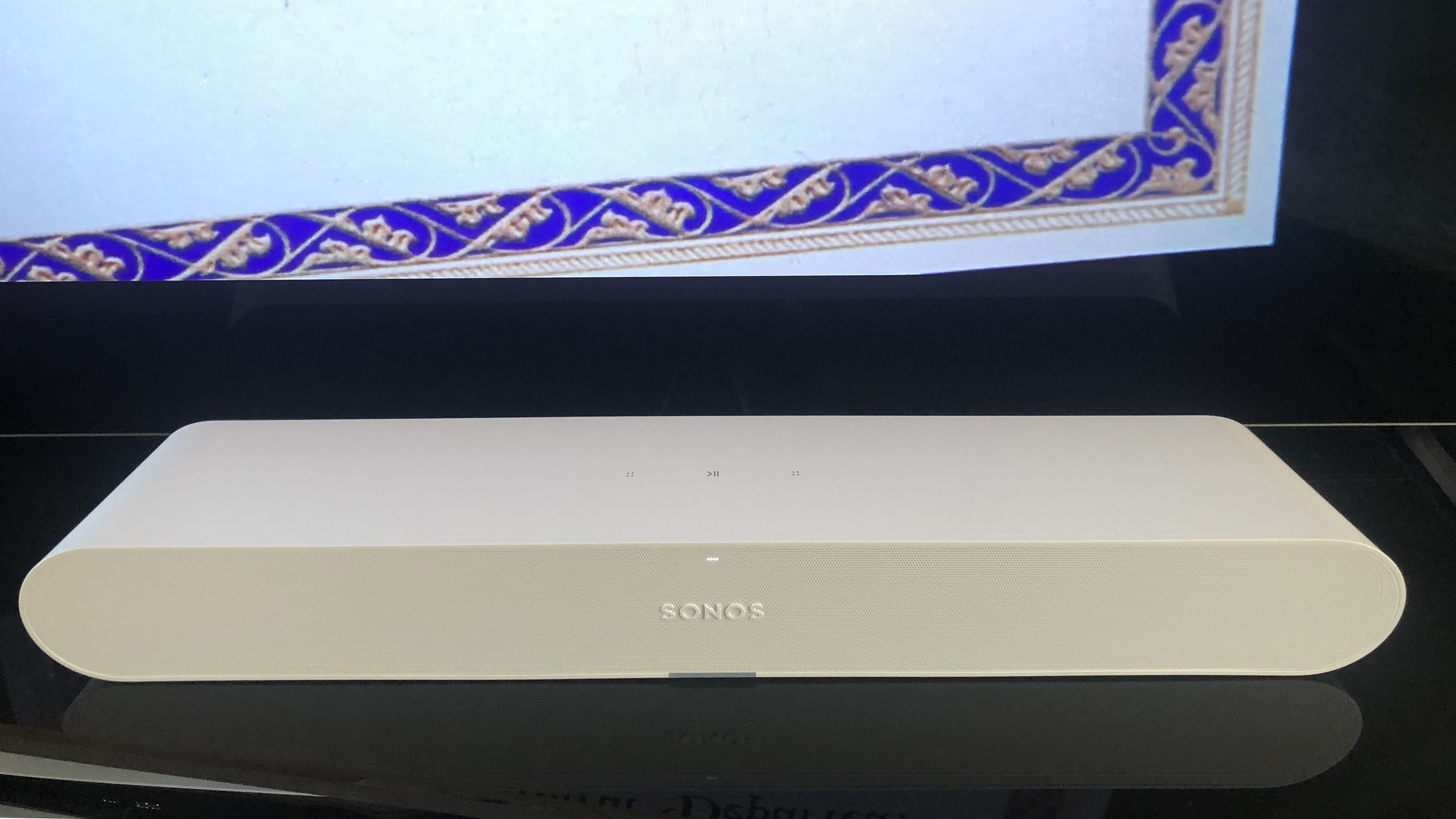Sonos Ray review: Is the smallest Sonos soundbar any good?
The smallest and cheapest Sonos soundbar will appeal to many, but does it best the competition?


There’s lots to recommend the Sonos Ray – not least its Sonos-ness and compatibility with the wider system – and in some ways it’s the ideal compact soundbar. However, there's no HDMI connection and it looks expensive next to its most obvious rivals, despite being Sonos' cheapest soundbar option to date.
-
+
Neat and compact
-
+
Coherent, unified sound
-
+
Sonos system compatibility
-
-
No HDMI input
-
-
Plenty of competition
-
-
Slightly small-scale presentation
Why you can trust T3

The Sonos Ray means we can now safely call Sonos' soundbar line-up a ‘range’: Sonos already has two very successful soundbars, the Beam (now in its second incarnation) and the Arc. The Ray slots in beneath those, becoming the most affordable and least complicated soundbar in the burgeoning Sonos line-up.
Yes, it’s affordable and yes, it’s part of the wider Sonos system, and yes, it can be augmented with wireless rear surround speakers with minimal fuss. But the Ray will compete in what is arguably an even more keenly contested sector of the market than the Beam or Arc exist in.
However, we get the vague impression the Sonos brand itself may be the most compelling thing about the Ray soundbar. Let’s find out if it’s true.
Sonos Ray review: Price and release date
The Sonos Ray is on sale from 7th June 2022, priced at £279 in the United Kingdom. The asking price in the United States is a slightly more palatable $279. While in Australia you’ll need to part with AU$399 – and if our experience of Sonos has taught us anything, it’s that the price isn’t going anywhere any time soon (but keep an eye on the embedded widget below, in case any bargains surface).
While this makes Ray the most affordable Sonos soundbar by some distance, for a product of its power and configuration it doesn’t look like any kind of bargain. Many well-regarded brands have similarly specified soundbars to sell you for quite a lot less money than this.
There's JBL, Panasonic, Sony and Yamaha as just four of the front-line manufacturers who spring to mind. The Ray’s membership of the world’s premier multi-room ecosystem will carry it a distance, certainly, but there’s going to have to be a bit more to this soundbar than that if it’s going to justify its asking price.
Sonos Ray review: Features and what's new?

By prevailing standards, the Sonos Ray is light on features. It’s a stripped-back, no-frills device with one purpose and one purpose only: to make the sound your TV currently makes all by itself seem inadequate.
Get all the latest news, reviews, deals and buying guides on gorgeous tech, home and active products from the T3 experts
So as far as features go, there’s not all that much to discuss. Connectivity is in a recess on the rear of the chassis, and it runs to a digital optical input, an Ethernet socket and a connection for mains power. There’s also a ‘reset’ button there too, but that’s your lot. There’s no HDMI compatibility, and Sonos provides an extremely slender 1.5m digital optical cable to get your TV’s sound on board (so make sure it's close). As far as wireless connectivity goes, there’s Wi-Fi and Apple AirPlay 2 on board.
The Ray can deal with stereo PCM, Dolby Digital 5.1 and DTS Digital Surround audio content. This is a stereo speaker, though, so either of those multichannel standards will be bounced down before you get to hear them. The Sonos is a forward-firing speaker, with a pair of tweeters, a couple of bass reflex ports, and a couple of what Sonos rather optimistically describes as ‘high-efficiency midwoofers’ arranged in a line across the front. There are four blocks of Class D amplification powering the four drivers – but because this is Sonos we’re dealing with, there are no details of the amount of power, or the size or composition of the speaker drivers.
Set-up is simple, because the control app is outstanding and Sonos’ ‘Trueplay’ feature, which calibrates the speaker to its specific environment if you wander around waving your smartphone for a short while, is effective too.
Sonos Ray review: Design and usability

The Ray is a compact (71 x 559 x 95mm if you're measuring), mildly horn-shaped soundbar, nicely built and finished in the established Sonos manner. It’s rounded off at each end, and is available in either a white or black matte finish. It’s almost entirely plastic, of course, but it’s nevertheless quite tactile and looks reasonably premium.
Although it’s small enough to be a realistic option for screens of as little as 40-inches, that height of over 70mm means it may well foul the bottom of any television screen that sits low to the surface it’s standing on. There’s a cost-option wall-bracket available if that’s more appropriate for your needs, and because of the way it’s configured the Ray is perfectly happy to sit on a middle shelf or similar.
As far as usability is concerned, the Ray’s relative lack of functionality means it’s simple to operate. If it’s part of a wider Sonos system that includes speakers with voice-assistant compatibility, of course, you can simply ask out loud for what you want. The bespoke Sonos voice-assistant is due pretty soon, too.
Otherwise, the current version of the Sonos control app remains the gold standard for this sort of thing: here’s when you can adjust volume, fiddle with EQ settings, integrate your streaming service of choice, switch on ‘night mode’ (for flattened dynamic response) or ‘speech enhancement’ (take a wild guess), and more besides. It’s a stable, simple and entirely admirable app.
There is a little row of LEDs behind the front grille, the colour of which will let you know what Ray is up to – these can be defeated in the app, of course. And on the top of the soundbar are three touch-controls: volume up, volume down and play/pause.
Sonos Ray review: Sound quality

The least a soundbar needs to do is to leave the unaccompanied sound of the television it’s attached to for dead – and, unsurprisingly, the Sonos Ray does so in comprehensive fashion. It’s a nicely balanced speaker, if rather tightly focused, certainly where movie soundtracks are concerned.
The low-frequency activity so many films liberally indulge in is given good expression, and bass sounds manage to be punchy and well-controlled at the same time – so when the going gets explosive, there’s a far more cinematic sense of impact than your TV has a hope of producing by itself.
At the opposite end of the frequency range there’s a reasonable level of bite and attack – the Ray never threatens to become unruly, but neither does it have quite the edge or shine required to make that shattering glass (or what-have-you) really cut through. Still, this is a preferable attitude to adopt than one of hard edginess.

The midrange, though, is the most fully realised and successful area of the Ray’s performance – which, when you consider just how much of your average soundtrack is midrange, is just as well. The Sonos is poised and believable with dialogue, generously detailed and loaded with character. Even without ‘speech enhancement’ switched on, voices are defined and distinct, with the nuances of cadence and overall delivery all in evidence.
The frequency range hangs together well, seemingly all of a single piece, and even though there’s an obvious point-source of sound the Ray creates an organised soundstage. Dynamic headroom is decent, which again serves the majority of multiplex content well, and transient response is good too.
Much of this good stuff carries over to the way the Ray deals with music. The same unity of tonality and integration is in evidence, the same sort of thoughtfully controlled punch. Detail levels remain high, and the Sonos communicates voices in the same direct, quite immediate way as it does with movies. The soundbar is a little uncertain when it comes to expressing rhythms with real positivity, though.
Sonos Ray review: Verdict

Anyone already in the Sonos ecosystem who requires a smaller soundbar can consider the Ray a no-brainer. It’s a diverting option for non-Sonos folk too, with its robust and organised sound a big plus. Overall, though, it seems just a little pricey and sounds slightly small-scale when up against the best of its rivals.
Also consider
Usefully cheaper than the Sonos Ray, better-specified and in many ways more accomplished in sonic terms, Yamaha’s SR-C20A is currently the outstanding budget soundbar in this price bracket. In all the areas the Sonos is strong – interface, the wider ecosystem, perceived value – the Yamaha is pretty average. But where it’s good – connectivity, sonic width and scale – the Yamaha outperforms the Ray in a way that’s unequivocal.
Simon Lucas is a freelance technology journalist and consultant, with particular emphasis on the audio/video aspects of home entertainment. Before embracing the carefree life of the freelancer, he was editor of What Hi-Fi? magazine and website – since then, he's written for titles such as Wired, Metro, the Guardian and Stuff, among many others. Should he find himself with a spare moment, Simon likes nothing more than publishing and then quickly deleting tweets about the state of the nation (in general), the state of Aston Villa (in particular) and the state of his partner's cat.
